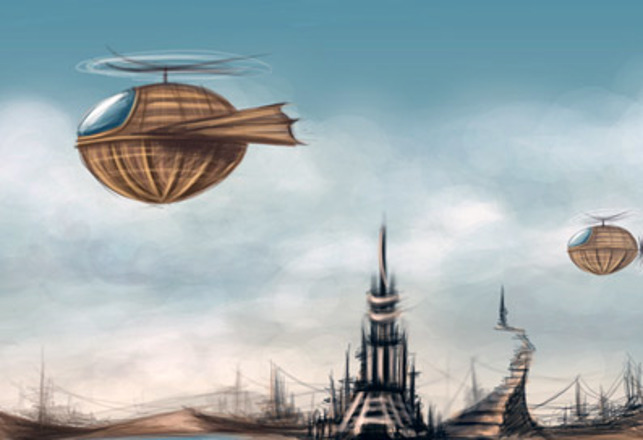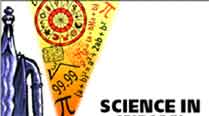prasad1
Active member
There the various post in the Sociology and Religious section Masquerading as science. They are purely mythical not real.
We can not debunk it.
For instance:
Ancient Chariots of Alien Gods: The Great Vimana Controversy:
Vimanas are, without question, mentioned throughout many of the ancient Vedic texts, proving they certainly are not a concept that originates entirely from recent times; but if not sophisticated avionics of the modern variety, what then might they have been? Could it be possible that some elements regarding the vimana mystery–specifically our interpretation of these objects as technologically advanced aircraft that existed in ancient India–could be a result of our own desire to superimpose modern themes and ideas into the framework of the ancient Indian epics?
Before we get to the discussion of flying craft, there are a few things we must look at first with regard to the exact meaning of what a “vimana” is, in order to better unravel why I feel there may be misinterpretation associated with their presence in literature. One thing that we must take into consideration is that “vimana” is a word used to describe a number of things in a variety of different contexts throughout the Vedas. For instance, vimana can translate to mean the innermost sanctuary of a Rama temple (sometimes called an “adytum,” though this word actually has its origins in the Greek, rather than the Sanskrit). A variety of different temples, palaces, shrines, towers, and other structures associated with kings, emperors and divinity were also called “vimanas” in the Vedas, roughly translated to mean “a god’s palace.”
But if it is clear that vimanas are indeed mentioned in the ancient Sanskrit texts, and that this term was used, at least on occasion, to describe flying objects, then where is the so-called “controversy” regarding vimanas? In truth, where I think our modern interpretation of such things becomes misleading is when we take “vimana” to mean anything more specific than merely an “ancient flying machine.” In other words, to assert that they were a technological device using highly advanced, anti-gravitic science and engineering that may have involved mercuric engines, etc, is something that, based on my own research, likely stems from constructions or misinterpretations from the earlier part of the last century. The same may not be said entirely of the vimanas themselves however, as one cannot refute their presence in the ancient texts, at least by virtue of their frequent mention, and various descriptions.
And in truth, much of this modern idea of the inner mechanics of vimanas stems from a single manuscript, authored around 1920, called the Vaimanika Shastra. This work is based entirely on information allegedly channeled by the author, Pandit Subbaraya Shastry, and the information contained within has been chalked up by most aeronautics experts in modern times as being pure rubbish, to put it nicely. To illustrate this, the following statement by the late John B. Hare of the Internet Sacred Text Archive discusses the shortcomings in people’s interpretation of the Vaimanika Shastra’s content over the years:

 mysteriousuniverse.org
mysteriousuniverse.org
We can not debunk it.
For instance:
Ancient Chariots of Alien Gods: The Great Vimana Controversy:
Vimanas are, without question, mentioned throughout many of the ancient Vedic texts, proving they certainly are not a concept that originates entirely from recent times; but if not sophisticated avionics of the modern variety, what then might they have been? Could it be possible that some elements regarding the vimana mystery–specifically our interpretation of these objects as technologically advanced aircraft that existed in ancient India–could be a result of our own desire to superimpose modern themes and ideas into the framework of the ancient Indian epics?
Before we get to the discussion of flying craft, there are a few things we must look at first with regard to the exact meaning of what a “vimana” is, in order to better unravel why I feel there may be misinterpretation associated with their presence in literature. One thing that we must take into consideration is that “vimana” is a word used to describe a number of things in a variety of different contexts throughout the Vedas. For instance, vimana can translate to mean the innermost sanctuary of a Rama temple (sometimes called an “adytum,” though this word actually has its origins in the Greek, rather than the Sanskrit). A variety of different temples, palaces, shrines, towers, and other structures associated with kings, emperors and divinity were also called “vimanas” in the Vedas, roughly translated to mean “a god’s palace.”
But if it is clear that vimanas are indeed mentioned in the ancient Sanskrit texts, and that this term was used, at least on occasion, to describe flying objects, then where is the so-called “controversy” regarding vimanas? In truth, where I think our modern interpretation of such things becomes misleading is when we take “vimana” to mean anything more specific than merely an “ancient flying machine.” In other words, to assert that they were a technological device using highly advanced, anti-gravitic science and engineering that may have involved mercuric engines, etc, is something that, based on my own research, likely stems from constructions or misinterpretations from the earlier part of the last century. The same may not be said entirely of the vimanas themselves however, as one cannot refute their presence in the ancient texts, at least by virtue of their frequent mention, and various descriptions.
And in truth, much of this modern idea of the inner mechanics of vimanas stems from a single manuscript, authored around 1920, called the Vaimanika Shastra. This work is based entirely on information allegedly channeled by the author, Pandit Subbaraya Shastry, and the information contained within has been chalked up by most aeronautics experts in modern times as being pure rubbish, to put it nicely. To illustrate this, the following statement by the late John B. Hare of the Internet Sacred Text Archive discusses the shortcomings in people’s interpretation of the Vaimanika Shastra’s content over the years:
Thus, in the absence of much of a justifiable link between the ancient flying vimanas and modern avionics (or even anti-gravitics), we are left to attempt to decipher by peering through the proverbial mists of time as to what, exactly, these “vimanas” actually were. Were there mechanical flying ships buzzing around in ancient India, or were these the chariots of the proverbial gods (or aliens)? Or, just perhaps, could some of our own understanding of the vimana mystery even stem from fanciful elaborations of these myths and legends, filtered through cultural windows that project the world of today onto mysteries of the past?The Vymanika Shastra was first committed to writing between 1918 and 1923, and nobody is claiming that it came from some mysterious antique manuscript. The fact is, there are no manuscripts of this text prior to 1918, and nobody is claiming that there are. So on one level, this is not a hoax. You just have to buy into the assumption that ‘channeling’ works. … there is no exposition of the theory of aviation (let alone antigravity). In plain terms, the VS never directly explains how Vimanas get up in the air. The text is top-heavy with long lists of often bizarre ingredients used to construct various subsystems. … There is nothing here which Jules Verne couldn’t have dreamed up, no mention of exotic elements or advanced construction techniques. The 1923 technical illustration based on the text … are absurdly un-aerodynamic. They look like brutalist wedding cakes, with minarets, huge ornithopter wings and dinky propellers. In other words, they look like typical early 20th century fantasy flying machines with an Indian twist.

Ancient Chariots of Alien Gods: The Great Vimana Controversy
The ancient Hindu epics are rife with tales of the strange and fantastic. Elements described within consist of elaborate


